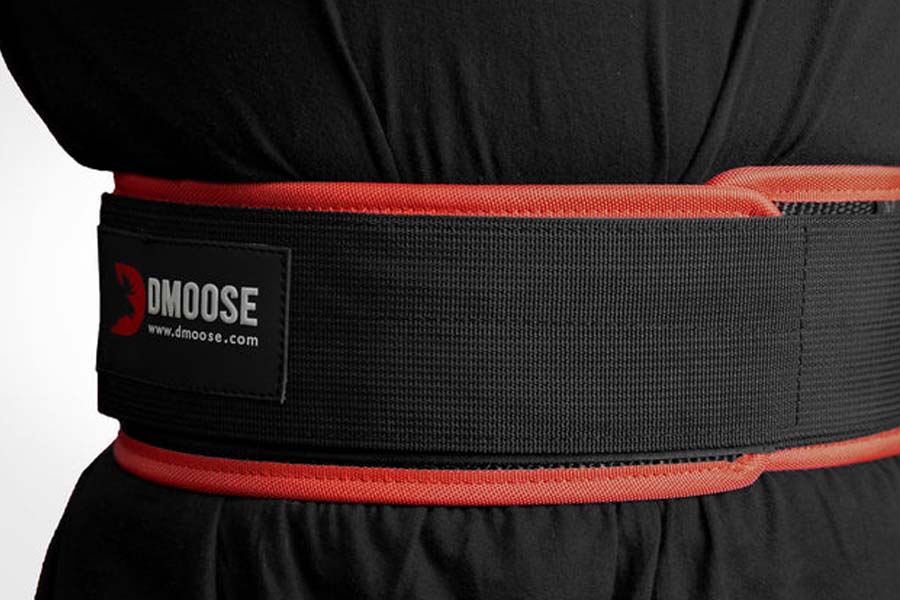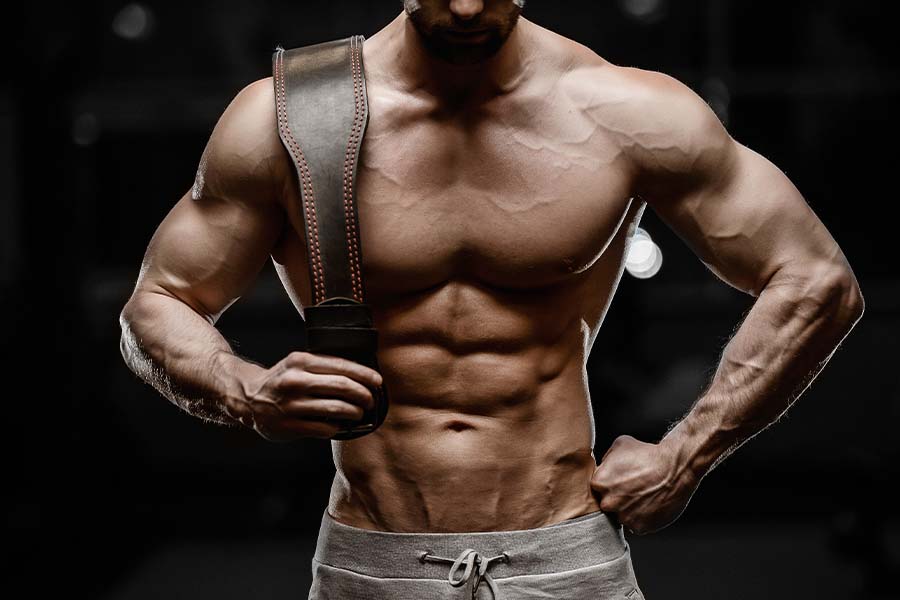Are you tired of constantly being bombarded with conflicting opinions on which lifting belt material is superior? Leather or Nylon? It's time to cut through the noise and get to the bottom of this age-old debate.
Are you a leather fanatic, believing in the "old school" powerlifting approach? Or are you a trendsetting nylon lover, valuing versatility and comfort above all else? The answer may be more complex than you thought.
This article will explore the pros and cons of leather and nylon lifting belts, considering various factors such as support, comfort, durability, and price. So sit back, relax, and prepare to have your world rocked by this thrilling exploration of lifting belts.
Related Article: Should You Wear a Weightlifting Belt While Training?
What Is a Leather Belt

Lifters who aim to achieve maximum lifts in compound exercises such as squats, deadlifts, rows, and presses will benefit from using leather belts.
Leather belts provide excellent support and are commonly used for weightlifting with heavy loads exceeding 80% of an individual's one rep max. They are available in varying thicknesses, with 10mm and 13mm being the most popular options. Additionally, leather belts can be found in either straight or tapered widths and fastened with either prongs or levers.
They are also highly recommended for competitive powerlifters, strongmen, and even some Olympic weightlifters, as long as the belt has a tapered design that is wider in the back and narrower in the front.
Related Article: 15 Best Weightlifting Belts for Powerlifters
What Is a Nylon Belt

Nylon belts provide moderate support, though less than leather belts. However, they are highly versatile and can be utilized in various exercises. They are available in various styles, including tapered or straight cut and widths, the most common being 3-5 inches. Nylon belts also have two types of fastening systems: velcro or ratchet.
Nylon belts are preferred for novice or recreational weightlifters who require a belt for multiple exercises but intend to avoid lifting with maximum efforts, like powerlifters. While they still offer advantages for compound exercises such as lunges and presses, they are better suited for dynamic exercises like snatches, cleans, and kettlebell swings.
Related Article: Weight Lifting Belt - The Absolute Protection You Need When Lifting Heavy Weights
7 Differences Between Leather Vs. Nylon Belt
Several significant differences exist between leather and nylon belts, which can be identified and analyzed better to understand the advantages and disadvantages of each type.
Leather Belts Are More Expensive
Nylon belts are generally less expensive than leather belts, as leather is a premium material that requires a metal fastener (either prong or lever). The price of leather belts can vary depending on quality, thickness, and fastening system, and it may cost between $60-120 or more for a high-quality product. A quality nylon belt usually costs between $30-50.
Leather Belts Provide Greater Support Than Nylon Belts
Leather belts are generally considered to provide more support than nylon belts, particularly for powerlifters who engage in heavy lifts. Leather belts come in thickness options of 10mm and 13mm, which are unavailable for nylon belts. For Olympic lifters, both leather and nylon belts can be utilized, as tapered leather belts offer a balance of support and comfort.
However, since powerlifters typically lift more significant amounts of weight than weightlifters, they require the high level of support that a leather belt provides. They should also add Multi-Vitamin supplements to their routine for better energy boost and support. Moreover, nylon belts are not approved for use in powerlifting competitions.
Recreational lifters who are not competing in formal events typically choose between leather and nylon belts based on other factors listed in this comparison.
Leather and Nylon Belts Have Different Fastening Mechanisms
Leather and nylon belts feature different fastening methods. Leather belts typically utilize a prong or lever fastener, while nylon belts use a velcro or velcro plus ratchet mechanism.
For individuals who desire a high level of security, a prong or lever belt may be preferable over a velcro belt due to its snug fit. On the other hand, nylon belts are designed with velcro or a combination of velcro/ratchet fastening mechanisms that provide a reasonable level of security, although less than a lever or prong fastener.
Furthermore, a nylon belt velcro/ratchet mechanism allows for greater flexibility, enabling the user to wear the belt looser during exercises requiring lighter support.
Nylon Belts Offer Greater Comfort Than Leather Belts
Nylon belts are generally considered more comfortable than leather belts, even after breaking the leather belt. This is because nylon belts enable you to keep the belt on between sets and adjust the fit as necessary, depending on the exercise. The level of comfort the belt provides is influenced by its thickness, width, and taper.
Nylon belts offer a more comfortable fit than leather belts for activities requiring high mobility, such as weightlifting or Crossfit movements.
However, it's worth noting that in certain situations, the primary goal may not be comfortable but rather achieving the highest degree of support and lifting as much weight as possible. In such cases, a leather belt may be the better choice.
Nylon Belts Are More Suited for Lifts That Require More Mobility
Nylon belts are better suited for more movement, such as dynamic exercises like lunges, kettlebell swings, snatches, and cleans. However, the preference between nylon and leather belts may vary based on the lifter's level and the amount of weight they are lifting. Some lifters still wear leather belts for these exercises to add support.
Leather belts can be restrictive due to their rigidity, limiting the range of motion during exercises where a lifter needs to move freely. However, some leather belts come in a tapered fit, which is wider in the back and thinner in the front. This design helps to address the issue of restricted movement and provides lifters with more support than a nylon belt without overly restricting their mobility during dynamic lifts.
Nylon Belts Offer a Greater Range of Versatility
Nylon belts have a more excellent range of versatility than leather belts as they can be adjusted to fit various levels of snugness. They are suitable for various exercises, including compound and dynamic exercises.
However, selecting a more versatile belt may compromise the level of support provided, so those who prioritize support for specific lifts may prefer leather belts. Leather belts offer superior stability and structure, making them the preferred choice for those who prioritize support.
Leather Belts Have Longer Break-In Periods
It takes longer for leather belts to break in compared to nylon belts. Unlike nylon belts, leather belts require a few training sessions to break in and become more comfortable as the leather material adjusts to the wearer's body. The flexibility of nylon material eliminates the need for a break-in period.
Thicker leather belts, particularly 13mm belts, may take even more time to break in and may not reach a comfortable fit. Despite this, the rigidity and support provided by thick leather belts make them a worthwhile investment.
Related Article: Common Powerlifting Meet Mistakes Made By Inexperienced Competitors
What to Consider Before Purchasing a Leather or Nylon Belt
Before making a purchase, you must consider a few factors to determine which type of belt is right for you. This guide will discuss the key considerations when choosing between a leather or nylon lifting belt.
Is This Your First Belt?
If you're purchasing a lifting belt for the first time, a high-quality nylon belt is likely a suitable option. Nylon belts support various exercises and are adjustable, comfortable, and reasonably priced.
The only circumstance where a nylon belt may not be appropriate is if you're seeking a belt for heavy squats and deadlifts and already lifting heavy weights without a belt.
Do You Plan to Wear It Only for Heavy Compound Lifts?
If you intend to wear a lifting belt solely for heavy compound lifts such as squats, deadlifts, presses, and rows, then it is recommended that you opt for a leather belt with a thickness of 10mm.
This is because leather belts provide more incredible support than their nylon counterparts. Although nylon belts can be worn for these lifts, they may offer different support than leather belts. Leather belts are designed to excel in providing support for heavy compound lifts, making them the preferred choice for powerlifters who prioritize lifting heavier loads.
Are You a Competitive Powerlifter or Plan to Complete in Powerlifting?
If you have aspirations to become a competitive powerlifter or are already competing in powerlifting, it is recommended that you opt for a leather belt rather than a nylon one.
This is because leather belts provide maximum support and can be worn for all three competitive powerlifting lifts - squat, bench press, and deadlift. The most commonly used leather belt is a 10mm powerlifting belt.
Do You Need a Belt for Olympic Lifts?
A belt is needed for support to perform Olympic lifts while maintaining freedom of movement. A nylon belt is a suitable choice, as are tapered leather belts that do not impede motion. Both types are used by elite lifters in competitions, depending on personal preference.
Is Price an Important Factor in Your Decision?
If you are looking for a lifting belt that won't break the bank, a nylon belt is a good option as they are typically less expensive than leather belts while still providing decent support and versatility.
While some affordable leather belts are available in the market, they may only last for a short time as high-quality belts. Check out our recommended belts below for an affordable and durable leather belt.
Conclusion
Choosing between weightlifting belts like leather and nylon belts can be tricky, so we have planned a whole chart for you. There are 7 differences between leather belts and nylon belts.
Leather belts are more expensive, leather belts provide more significant support leather, and nylon belts have different fastening mechanisms, and nylon belts offer greater comfort. They are more suitable for lifts requiring more mobility; nylon belts offer a more fantastic range of versatility and extended break-in periods
Before purchasing a belt, you need to see factors like if it is your first belt, if you're planning to wear it for heavy compound lifts, if you're a competitive powerlifter or plan to complete in powerlifting, if you need it for Olympic lifts and if the price is the critical factor in your decision. Look into these and choose a belt for yourself!
Reading List
Article Sources
- Lander, J. E., et al. "The Effectiveness of Weight-Belts during the Squat Exercise." Medicine and Science in Sports and Exercise, vol. 22, no. 1, Feb. 1990, pp. 117-26.








